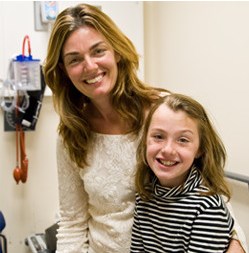 Did You Know?
Did You Know?
- There are more boys born with cerebral palsy than girls (for every 100 girls there are 135 boys).
- About one-half of children with Cerebral Palsy are born prematurely.
- More than one-half of children with Cerebral Palsy have hemiplegia (one side of the body is paralyzed, as typically seen in adult stroke).
- Stroke in a baby or child less than the age of 3 results in Cerebral Palsy.
- One in nine people with Cerebral Palsy have features of autism.
- One in four people with Cerebral Palsy have epileptic seizures.
- Six out of 10 people with Cerebral Palsy have normal or superior intelligence.
- One in three children with Cerebral Palsy cannot walk.
- One in four children with Cerebral Palsy cannot feed or dress themselves.
- The incidence and prevalence of Cerebral Palsy is rising worldwide. There are new treatments that must be tested to improve function and decrease the disability caused by Cerebral Palsy. These include medications, regenerative techniques, physical and cognitive therapies, robotics, functional neuromuscular stimulation, biofeedback, and more.
- Research into the cure, prevention and treatment of Cerebral Palsy receives less than 0.05 percent of total NIH funding (Total NIH budget: $29 billion; only $16 million of this goes toward Cerebral Palsy research).
Prevalence vs. Private Funding
- Leukemia: Affects one in 25,000/Funding: $310 Million
- Muscular Dystrophy: Affects One in 20,000/Funding: $175 Million
- Pediatric AIDS: Affects One in 8,000/Funding: $394 Million
- Juvenile Diabetes: Affects One in 500/Funding: $130 Million
- Autism: Affects One in 150/Funding: $15 Million
- Cerebral Palsy: Affects One in 278/Funding: $2 Million